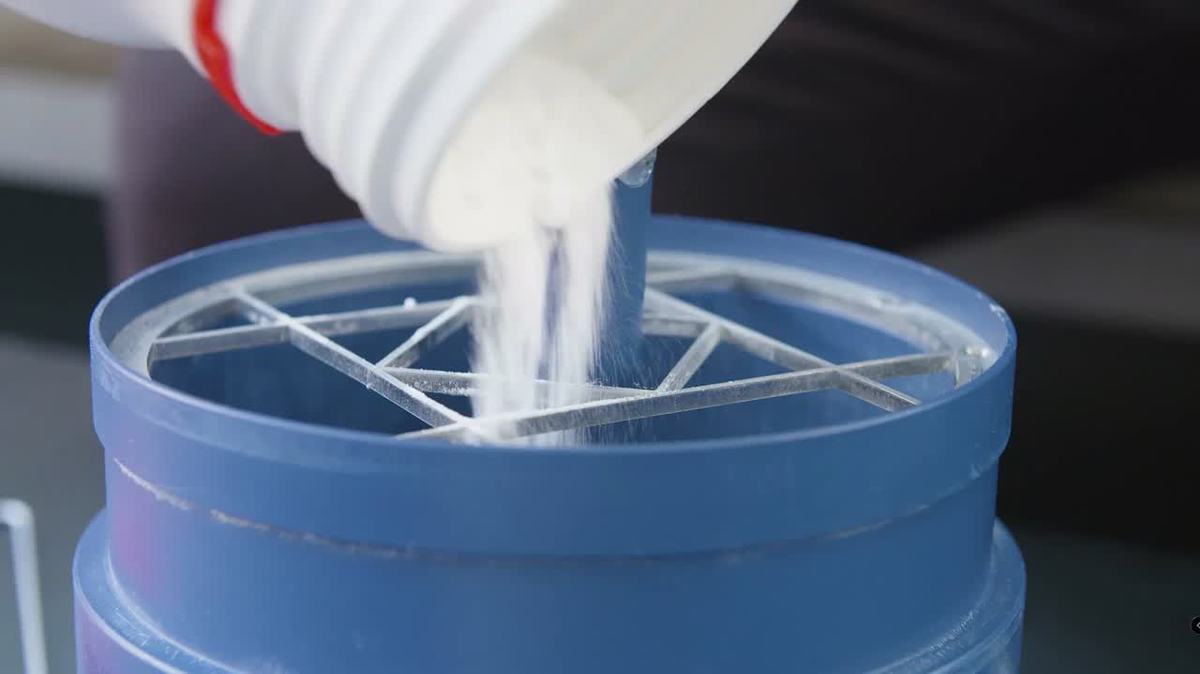New powder-like hydrogen carrier said to rival compression and liquefaction
Storage firm Zenith Energy Terminals and an Israeli startup Electriq will build a production facility for a hydrogen carrier in the Port of Amsterdam.

PHOTO: 3D illustration of Electriq's powder hydrogen carrier manufacturing facility. Electriq
Electriq describes its hydrogen carrier powder-like and that it is safer and more efficient than compressed or liquefied hydrogen.
Zenith Energy Terminals chief executive Jeff Armstrong says the project will help facilitate Europe's transition to sustainable energy.
Hydrogen is the primary feedstock needed to produce low-emission alternative marine fuels such as ammonia and methanol. But as it is tricky to transport and store, global trade and consumption on a large scale has been held back.
Hydrogen has a low volumetric energy density. It needs to be stored either in a compressed form at high pressure (350-700 bar) or in a cryogenic form at very low temperatures (−252.8°C) to ensure it does not escape into the atmosphere during transport. However, both processes are very expensive and tend to increase the hydrogen's overall transportation cost.
This conundrum is causing hydrogen producers and suppliers to develop effective methods for transporting hydrogen over long distances with minimal boil-off losses. Hydrogen carriers such as ammonia and methanol are tried-and-true methods for transporting hydrogen, while liquid organic hydrogen carriers (LOHC) are also being studied.
Electriq's powder carrier compares well to LOHCs because of its inert chemical bonding and potential for long-term storage without boiling off. But unlike LOHCs, Electriq says its powder carrier can store hydrogen at ambient temperatures and has a high energy density.
 PHOTO: Hydrogen is stored in a dry powder form instead of compressing or liquefying it, Electriq says. Electriq
PHOTO: Hydrogen is stored in a dry powder form instead of compressing or liquefying it, Electriq says. Electriq
To create the hydrogen carrier, Electriq reacts hydrogen gas with a chemical compound called potassium metaborate (KBO2) to produce a powder-like substance known as potassium borohydride (KBH4). The substance is transported in a box-like container. It is dehydrogenated, which involves mixing KBH4 and water to release hydrogen, resulting in KBO2 as a by-product.
Potassium borohydride is used in plastic production. It has been classed as a hazardous compound by chemists because it is toxic, highly flammable and reactive with water. However, Electriq claims that its powder carrier “will simply dissolve in seawater if it comes to a spill, decomposing into natural minerals that seawater contains.”
By Konica Bhatt
Please get in touch with comments or additional info to news@engine.online





